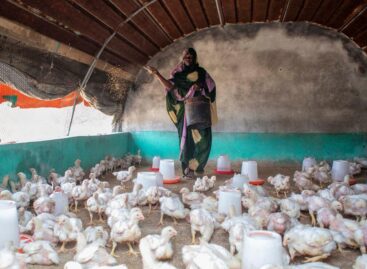FAO: Food Price Index eases in October as dairy prices decline
Global food prices dipped in October, led lower by dairy products, averaging 27 percent below its all-time high reached in early 2011.
The FAO Food Price Index averaged 176.4 points for the month of October, down 1.3 percent from September while still up 2.5 percent from a year earlier.
The FAO Food Price Index is a measure of the monthly change in international prices of a basket of food commodities.
The FAO Dairy Price Index declined 4.2 percent during the month, marking its first drop since May.
International quotations for butter and whole milk powder eased in October, as importers held back on purchases awaiting new supplies from Oceania, while low demand and ample intervention stocks in the EU pushed skim milk powder prices down.
The FAO Vegetable Oil Price Index also declined, by 1.1 percent from its September value, as key palm and soy oil prices eased in light of positive production prospects.
The FAO Sugar Price index declined 0.7 percent, influenced by weakening in the currency of Brazil, the largest exporter, and on the back of prospects for larger beet crops in the EU and a bigger output in the Russian Federation.
The FAO Meat Price Index declined 0.9 percent, as intensifying competition among pigmeat exporters, combined with sluggish import demand, drove international quotations lower.
The FAO Cereal Price Index edged up a notch, 0.4 percent led by higher rice prices even as wheat quotations were generally lower.
Cereal production on course for a record high
Global cereal production in 2017 is forecast to surpass the 2016 peak by a small margin, according to FAO’s latest Cereal Supply and Demand Brief, also released today.
Worldwide production of coarse grains is set to reach a new record, thanks to expansion in South America and southern Africa. Wheat production, by contrast, is forecast to decline slightly due mostly to lower harvest volumes foreseen in the United States of America. Global rice output, on the other hand, is expected to remain broadly stable.
FAO’s latest estimates point to a 1.0 percent expansion in world cereal utilization in the coming year, with world cereal stocks on course to set a new record level by the close of seasons in 2018. Global stocks of rice and coarse grains are projected to hit record highs, while those of wheat already have.
Given the ample size of export supplies, competition among major exporters in the year ahead is expected to remain stiff, with expanding world trade volumes in maize, sorghum and rice offsetting an expected decline in wheat.
FAO will offer more detailed information and analyses of key food commodity trends on 9 November, when it releases the next issue of Food Outlook.
Related news
FAO: International food prices have been declining since September
🎧 Hallgasd a cikket: Lejátszás Szünet Folytatás Leállítás Nyelv: Auto…
Read more >FAO-Ministry of Agriculture Scholarship Program Continues
🎧 Hallgasd a cikket: Lejátszás Szünet Folytatás Leállítás Nyelv: Auto…
Read more >FAO: 2026 is the International Year of Rangelands and Pastoralists
🎧 Hallgasd a cikket: Lejátszás Szünet Folytatás Leállítás Nyelv: Auto…
Read more >Related news
Hungarian Confectionery Manufacturers Association: trends in 2025 and prospects for 2026
🎧 Hallgasd a cikket: Lejátszás Szünet Folytatás Leállítás Nyelv: Auto…
Read more >Fidelity Outlook 2026: Who will bring the pick and shovel to artificial intelligence?
🎧 Hallgasd a cikket: Lejátszás Szünet Folytatás Leállítás Nyelv: Auto…
Read more >This is how the lives of sole proprietors will change from January 1: the individual tax-free limit will increase to 20 million forints, SZOCHO will be transformed
🎧 Hallgasd a cikket: Lejátszás Szünet Folytatás Leállítás Nyelv: Auto…
Read more >






